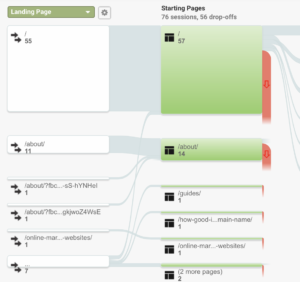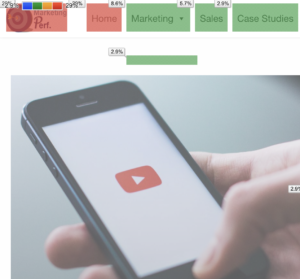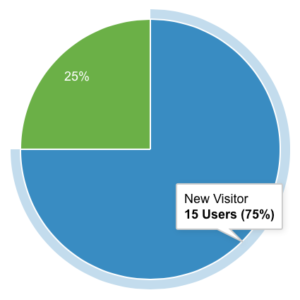The first question that you need to ask yourself before logging into your Google Analytics account is: what do I want to achieve with my website? While it sounds pretty obvious for ecommerce websites (sell more products), it may be different for others. But in the end, it is all about getting more exposure for your business in search engines for keywords related to your activity.
Here are 5 key metrics that should be checked for all types of websites.
1. Customer journey
 This is some very important data that will help you understand where your customers go on your website. Depending on what you’re looking to achieve with your website, you can analyse this journey to detect anomalies or simply try and engage your customers more on their journey.
This is some very important data that will help you understand where your customers go on your website. Depending on what you’re looking to achieve with your website, you can analyse this journey to detect anomalies or simply try and engage your customers more on their journey.
As you can notice in the example above, most people who landed on the home page went to the About tab afterwards. In this particular example it may be a good idea to strengthen the About page and reassure the users that this website is trustworthy in its information. This report will help you understand your customers better, what their needs are and what they are looking for on your website.
Where to find this: Behaviour/Behaviour flow
2. In-Page Analytics (in Chrome)
 This is another very important report that will help you identify gaps on your website or new opportunities. It is extremely important to check this report for all vital pages of your website. This will help you understand where your users click and more importantly whether they click where you want them to. This report can help you improve your pages and add call to actions or highlight specific links where necessary.
This is another very important report that will help you identify gaps on your website or new opportunities. It is extremely important to check this report for all vital pages of your website. This will help you understand where your users click and more importantly whether they click where you want them to. This report can help you improve your pages and add call to actions or highlight specific links where necessary.
Where to find this: Install the Page Analytics plugin in Chrome / Make sure you’re logged to Google for the correct Analytics account.
3. Desktop, mobile & tablet

This report will help you find out if your website is fully compatible on all devices. The example below shows a much higher bounce rate for mobile phones, which probably means it is not showing properly on this device. Once you notice a problem, go to Devices to check what exact types of devices seem to be the problem and adjust your website accordingly.
Where to find this: Audience/Mobile/Overview – Devices
4. Technology
Having a website that displays perfectly on all older versions of a browser (hello Internet Explorer!) is sometimes difficult. This report will show you what type of browser your visitors are using. Depending on your sector of activity and your target audience and country, you may notice that one particular browser stands out from the rest.
If that’s the case, you will need to make sure your site is displayed perfectly on this one. It may require you to get rid of some fancy technology but in the end a website displaying perfectly for your users is more important.
Ultimately, make sure your website has been cross browser tested before launch.
Where to find this: Audience/Technology/Browser & OS
5. Returning visitors vs new visitors
At first glance you may not realise the importance of this data, but there is more depth to it than you may imagine.
- Average time on page

The first important thing is to check the average time a new visitor stays on your page. If you notice this percentage is lower on some particular pages, you should replicate what seems to work on other pages (call to actions, design, content).
Also make sure the page load time is not too long and there are no mistakes on it. - Bounce rate
The bounce rate will always be higher for new visitors than for returning ones. But if you notice it is over 2 times higher you may have a problem of engagement on your page. Put together a special offer for new visitors to try and decrease the bounce rate. Also remember to check that there is no problem on some pages (load time, wrong content, etc).
Where to find this: Audience/Behaviour/New vs Returning
A note about Webmaster Tools
This is a great companion to Google Analytics. To start with, it will give you something Google Analytics does not anymore: search queries from SEO visits. It is not as comprehensive as it used to be in GA but you will at least have a little something to look at.
It will also give you additional information such as links to your site, internal links, index status and crawl errors. Registering your site to Webmaster Tools is pretty easy: all you will need to do is upload some code to your server to verify your site and you will be able to get access to a variety of complementary reports to help you understand better what is happening on your website.


